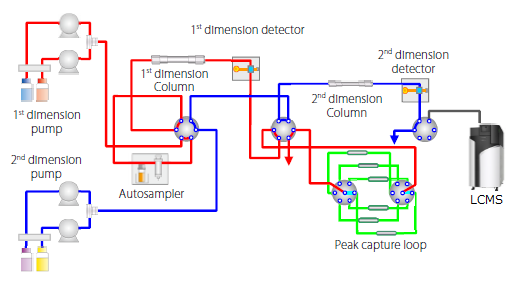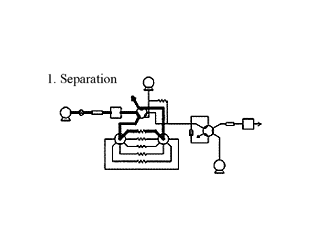All sample processing, from introduction, separation and concentration of target compounds, desalting and solvent replacement, to transfer to the LC-MS, has been completely automated.
Co-Sense for LC-MS
Liquid Chromatograph with online Sample Preparation

In LC-MS, there are various factors which may preclude the applicability of HPLC with MS analysis, including the interference associated with non-volatile buffers often used in HPLC. Therefore, tedious procedures are adopted, in which separation and collection is conducted by HPLC, and after desalting and other processing, MS measurement is performed.
Co-Sense for LC-MS automates the entire process of separating and purifying the target compounds from the sample, including the processes of purifying, concentrating and desalting. This eliminates the need to select HPLC mobile phases to accommodate subsequent measurement using LC-MS.
Features
-
Fully Automated Sample Processing
All sample processing, from introduction, separation and concentration of target compounds, desalting and solvent replacement, to transfer to the LC-MS, has been completely automated.
News / Events
-
Shimadzu has released the Nexera MX.
Nexera MX processes twice the number of samples as conventional LCMS systems in the same amount of time.
-
“Advanced i-Series” High Performance Liquid Chromatograph
Retaining the excellent basic functions of the flagship “i-Series”, the Advanced i-Series boasts increased pressure resistance and additional functions to support remote work including working from home.
-
Shimadzu has released the ELSD-LT III Evaporative Light Scattering Detector for HPLC.
The evaporative light scattering detector (ELSD) is a general-purpose universal detector that can even detect components with no UV absorption, such as carbohydrates, lipids, surfactants, and synthetic polymers.
-
Shimadzu has released the Microsampling Device, MSW2™ Type Udck™
For Research Use Only. Not for use in diagnostic procedures.
-
Shimadzu has released Shim-pack MC PLONAS Series.
Shim-pack MC PLONAS 2.7 μm columns reduce the back pressure yet maintain the performance of a sub 2 μm fully porous particle column. The pressure limit is 40 MPa.
-
Application Note: "Analysis of Pharmaceuticals' Impurity - Regulations and Analysis for Carcinogenic Substances -"



